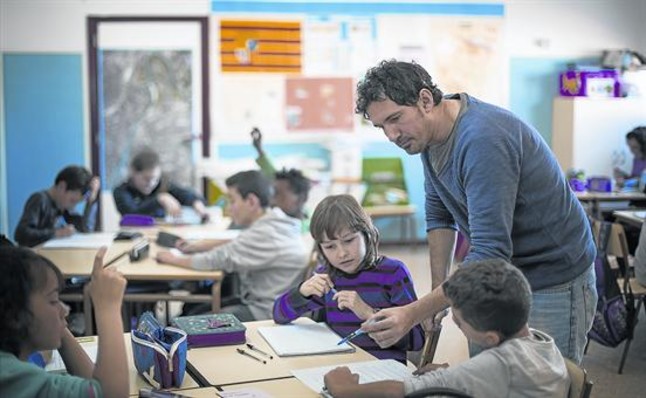I recently
heard a TED talk from Brian Goldman, a doctor who
admits to having made mistakes. In very emotional language, he describes some
costly emergency room mistakes, and then makes a strong case for changing the
way that the medical profession addresses such things. He believes that
medicine will improve if doctors are free to discuss their mistakes, without
judgment, allowing them to learn from each other. But, he continued, because
doctors are judged by mistakes, they are too afraid to discuss them. Instead,
they are often covered up, blamed on others, or ignored.
Hearing this
talk created in me a great need to examine the many mistakes I have made in my
life. I discovered that my mistakes fall into
four categories:
1.
Those I hid
2.
Those I learned nothing from
3.
Those I learned from
4.
Those I learned
from and shared my new knowledge with others.
It’s the last
two categories that I think have great potential to increase learning and
teaching.
Finding Value in Error
Teachers, like
doctors, are expected to be mistake free. Administrators, parents, and even
other teachers judge them very negatively for making mistakes. Yet when a
teacher forms strong relationships with another teacher or two, they share
their problems freely, ask for and give advice, and learn from each other. This
also happens in schools where mentor teachers share ideas with new teachers.
What would
happen if those pairs or threesomes expanded to include a small group of
teachers, plus administrators, counselors, or even whole departments or entire
school faculties? I know that some schools have created the trust necessary for
such discussions. I think this concept could grow to include a wider number of
schools, maybe even become a regular professional procedure for all teachers.
What would you think of this idea? Is it feasible? Worthwhile? Helpful? An
important side effect of discussing mistakes might be to change the perception
of mistakes, not only for teachers, but for students as well. When teachers
learn from their mistakes, they might be more willing to let students learn
from theirs.
Changing
perceptions about students' mistakes is the second way that mistakes can
improve learning. In the vast majority of classrooms, mistakes are evaluated as
poor performance. Grades are lowered by mistakes. Students are encouraged both
formally and informally not to make mistakes.
This belief
system is absurd. When I thought of the mistakes I made over the years, the
bigger my mistake, the more I learned. I learned from my success, also, but not
nearly as much. I guess that every reader of this post has learned and is still
learning from mistakes.
9 Ways to Teach With Mistakes
The problem for
students is not that they make mistakes. The real problem is that teachers
don't use those mistakes to allow and promote learning. Because shame is
currently attached to mistakes, students are afraid to take chances, explore,
and think for themselves. As a clear example of how damaging this view can be,
look at the makeup of most gifted and talented programs. In far too many
schools, the students in these classes are not the most creative risk takers or
unique thinkers. They are the students who scored the highest on standardized
tests. Therefore, we label as gifted or talented the students who make the
fewest mistakes. I believe that it's a mistake to think of mistakes as
something bad. When mistakes become learning opportunities, everything changes.
Students take more risks, think in new ways, cheat less, and solve mysteries
that had previously eluded them.
Here are some
things that we can do in the classroom to change this defeating way of
thinking, including both formal and informal evaluation processes:
1.
Stop marking
errors on tests and papers without explaining why they're wrong. Give enough
explanation to help your student understand what went wrong and how to fix it. A big red X is
insufficient.
2.
Give students a
chance to correct their mistakes and redo their work. This allows
mistakes to become learning opportunities.
3.
Improvement
must become a significant factor in the evaluation process. The more a student
improves, the higher his or her grade. Nothing shows learning from mistakes
more than improvement.
4.
When a student
makes a mistake in a class discussion, don't say things like, "No, wrong,
can anyone help him?" Don't just call on someone else without further
comment. Instead, ask the student, "Why do you think so? Can you give an
example? If you could ask yourself a question about your answer, what would it
be?"
5.
My friend and
colleague, Madeline Hunter, suggested starting with what is right. If a teacher
asks, "Who was the first president of the United States?" and a
student answers, "Barack Obama," instead of saying, "You're
wrong," try saying, "Barack Obama is a president, you're right about
that. However, he wasn't the first. Let's go further back in history."
Even silly answers can be responded to in this way.
6.
If a student
needs help with an answer, let him or her choose a classmate to help. Call the
helper something like a "personal consultant."
7.
Instead of (or
at least in addition to) walls filled with students' achievements, have a wall
where students can brag about their biggest mistakes and what they learned from
them.
8.
Have biweekly
class meetings where students share a mistake they made, what happened after,
and what they learned.
9.
Be sure to tell
the class about your own mistakes, especially if they are funny, and what you
learned from them.
I would love to
see a sign on every entrance to every school that says, "Everyone who
enters here will learn." Learning means not being afraid to examine
mistakes that teachers make and encouraging students to think in ways that
might produce mistakes. Use all these mistakes to learn from, to improve, and
to feel good about individual progress.
http://www.edutopia.org/blog/use-mistakes-in-learning-process-richard-curwin












